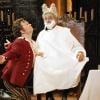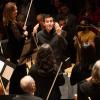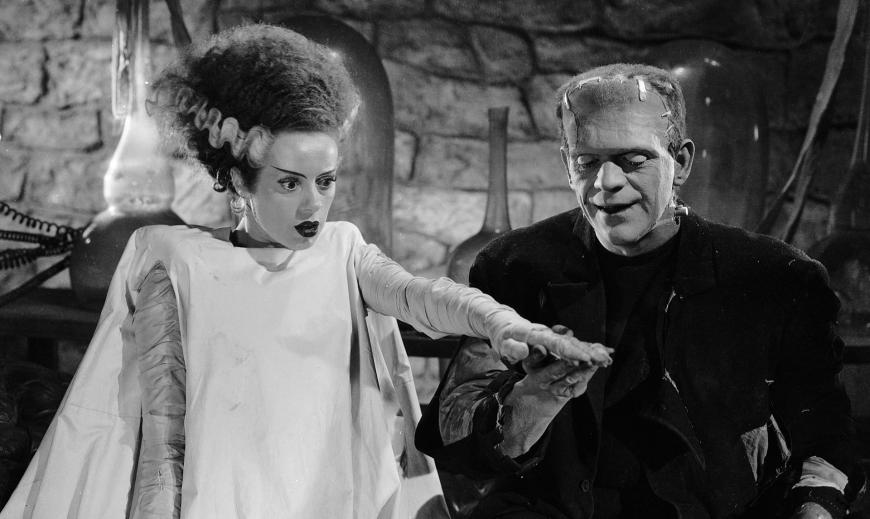
“She’s alive!”
That’s the revelatory exclamation that provides the climax in the classic 1935 horror film Bride of Frankenstein. Everything has built to this moment: the plot that has lured the traumatized Dr. Frankenstein (Colin Clive) back to his sparks-flying, life-inducing laboratory; Boris Karloff (simply KARLOFF in the opening credits) in his return to the role of the Monster; the direction by James Whale; the Sergei Eisenstein-influenced editing by Ted J. Kent — all accented by the lushly melodramatic score by Franz Waxman.
On Friday night, when that moment came and Elsa Lanchester stood there in all her ghoulish splendor as the Bride, her hair a black thundercloud streaked by lightning, the audience at The Theater at Ace Hotel went wild. Of course, that’s exactly why you’d buy a ticket — to enjoy the party atmosphere of Los Angeles Opera’s “Off Grand” Halloween fright-night screening. And to add luster, the film was accompanied by 36 members of the LA Opera Orchestra, conducted by Jenny Wong.
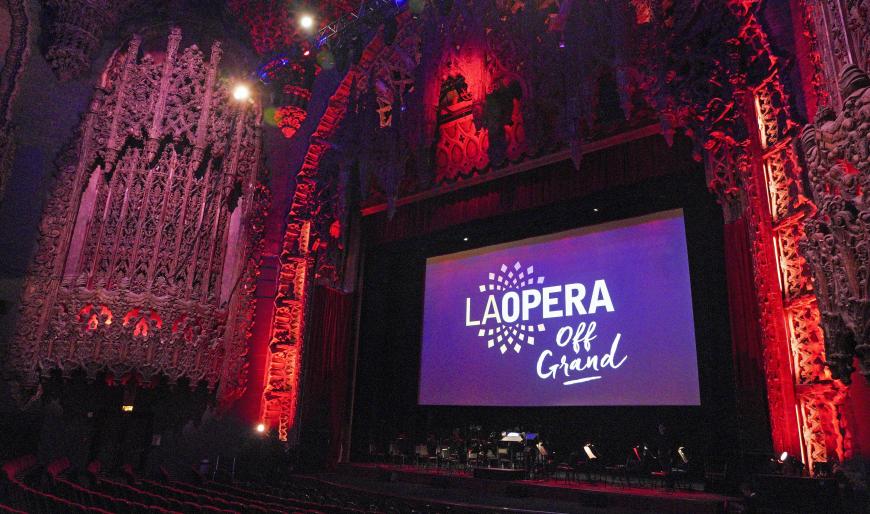
Born in 1906 in the Prussian (now Polish) province of Silesia, Franz Waxman broke into the movies as an orchestrator during the pioneering era of German cinema, including working on the music for Josef von Sternberg’s Der blaue Engel (1930). But it was Waxman’s original score for the 1934 film Liliom that attracted the attention of James Whale, who was in search of a composer for his Frankenstein sequel. When the two men met in Hollywood, Whale knew he’d found his composer. And Waxman’s score for Bride of Frankenstein was so successful that he was offered the position of head of music for Universal Studios. He would later win two Oscars, one in 1950 for his score for Sunset Boulevard and the other in 1951 for A Place in the Sun.
Waxman’s score for Bride is highly effective, from his subtle use of underscoring to his incorporation of diverse musical styles and classical music references that his audiences would have found familiar. The music also creates atmosphere, building and sustaining tension and then bringing it all to a rousing climax.
Of the big moment in Bride, the composer’s son later wrote, “During ‘The Creation of the Female Monster’ sequence of the film, an obsessive heartbeat (represented by the timpani) accompanies ghostly strings and wind sonorities as the female creature is ‘born’ amidst blinding electrical effects and the tolling of mock wedding bells.”
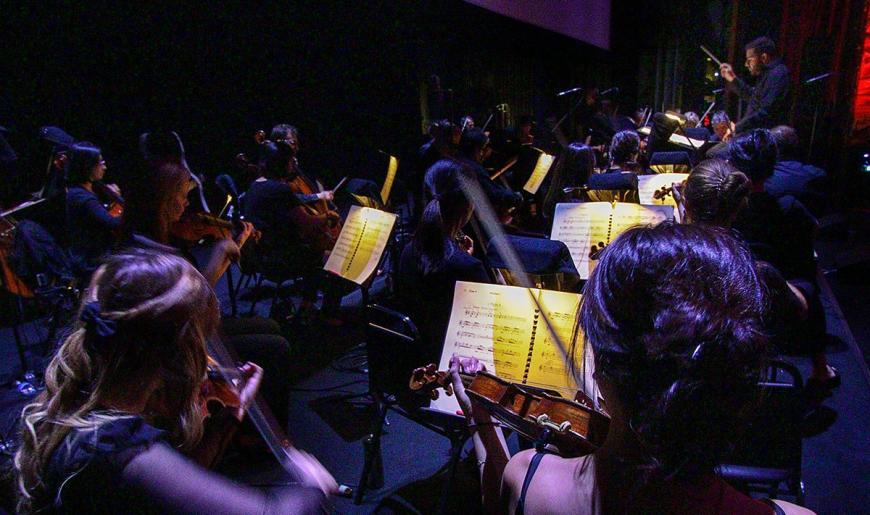
Skillfully conducted by Wong, the performance also brought out the influence of Richard Strauss’s tone poems and Erich Wolfgang Korngold’s swashbuckling flair on Waxman. His bold themes would lay the groundwork for generations of Hollywood composers to come. There would certainly be no John Williams without Franz Waxman.
The world of cinema acting has, however, changed a great deal since 1935. That which was considered dramatically viable then brought howls of laughter from the audience on Friday.
And in truth, it’s impossible to watch Bride, and particularly Una O’Connor’s over-the-top performance as the cronelike housekeeper Minnie, without seeing Cloris Leachman’s horse-braying star turn as Frau Blücher in Mel Brooks’s satiric masterpiece, Young Frankenstein.
That being said, hearing the LA Opera Orchestra perform Waxman’s score live as Whale’s film was projected in a genuine movie palace was a musical-cinematic treat of the first order, even if the audience felt a bit more like midnight at The Rocky Horror Picture Show.
On a humorous note: In 1949 composer Richard Rodgers “borrowed” the ascending melody of Waxman’s “bride’s theme” and transformed it into “Bali Ha’i,” one of the grand motifs for Rodgers and Oscar Hammerstein II’s musical South Pacific.


